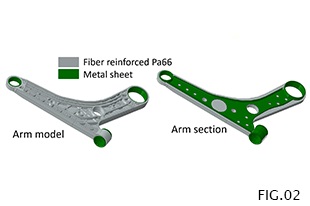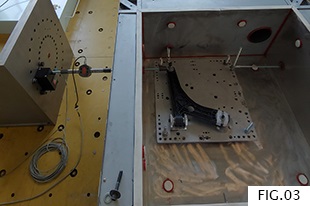
Politecnico di Milano’s LiDuP (Lightweight structure and Durability Performance Lab) provides a fundamental facility to the lightweight product design, that is nowadays an essential part of any vehicle construction (for both surface and air transport). The lab was launched by our University in May 2017, and currently foresees the collaboration of three different Departments (Mechanical Engineering, Chemistry, Materials and Chemical Engineering “Giulio Natta”, Civil and Environmental Engineering). It provides both experimental and theoretical support to industry, in the framework of Industry 4.0 scheme.
For the development of innovative lightweight concepts, specific equipment is required for testing and characterizing materials and components. The LiDuP Lab provides a fundamental facility to develop any mid-size lightweight product by means of experimental and theoretical support. LiDuP Lab also provides facilities for the preparation of materials based on graphene and carbon nanotubes: tuning of their solubility parameter allows to achieve even dispersion and intimate interaction with liquid and polymer matrices. From the scientific point of view, one of the European Research Council evaluation panel (PE8_13) refers to lightweight construction.
Experimental support: LiDuP Lab allows testing of components subject to thermal, environmental (humidity), sunlight and mechanical stresses simultaneously at a scale which is that of a medium-size component. In particular, the Laboratory provides data for both product development and testing of complex components (for example, elastic bushings, suspension arms of vehicles, components of civil structures, various kinds of consumer objects, etc), and the experimental assessment of the variation of the physical characteristics during the lifetime of the component (durability performance). LiDuP Lab has also facilities dedicated to the functionalization of sp2 carbon allotropes, such as graphene and carbon nanotubes. The following available systems allow to create a fit for purpose set-up (Static, Fatigue, Thermal, Combined and Durability) based on:
- Component size up to 2000 x 800 x 1000 mm (or more with proper setup arrangement);
- Temperature and humidity control (from -70 to +180 °C, from 5% to 90% RH);
- UV lamp (on request);
- Ozone generator (on request);
- 4 or more hydraulic actuators for simultaneous loading (dynamic loading up to 170 kN, frequency depending on test setup).
Il laboratorio LiDuP vanta set-up unici sul territorio nazionale (e, come nella configurazione proposta, nella Figura 1, in Europa)
Theoretical support: LiDuP provides designing and understanding of experimental tests based on proprietary and commercial software pertaining to: continuum mechanics and mechanics of materials, multi-body systems dynamics, optimization theory, vehicle dynamics. Additionally, materials and chemical issues are dealt with both at the macro and nano scale. The Lab has been involved in the investigation on a Plastic (hybrid) suspension arm for automotive, Figure 2. In this project (Project SOLE, SOLE2 FESR EU/ Lombardy Region), a lightweight design of a lower McPherson suspension arm made of a hybrid structure is studied theoretically and experimentally. The hybrid structure of the arm is realized by a short glass fiber reinforced PA66 with an Aluminum 6061 T6 sheet reinforcement in the core of the structure, Figure 2. The load carrying properties of the structure are accomplished by the PA66 with glass fiber reinforcement, while the aluminum sheet avoids the separation of the component in case of fracture. The design of the arm, according to the paradigms of Industry 4.0, has been completely digitalized, along with the manufacturing process. The material and the bonding system have been completely characterized by experimental tests on simplified prototypes. The final prototype of the suspension arm has been tested in the climatic camber for assessing its performances. A quasi static longitudinal force has been applied by an hydraulic actuator, while the deformation of the structure has been measured, Figure 3.



